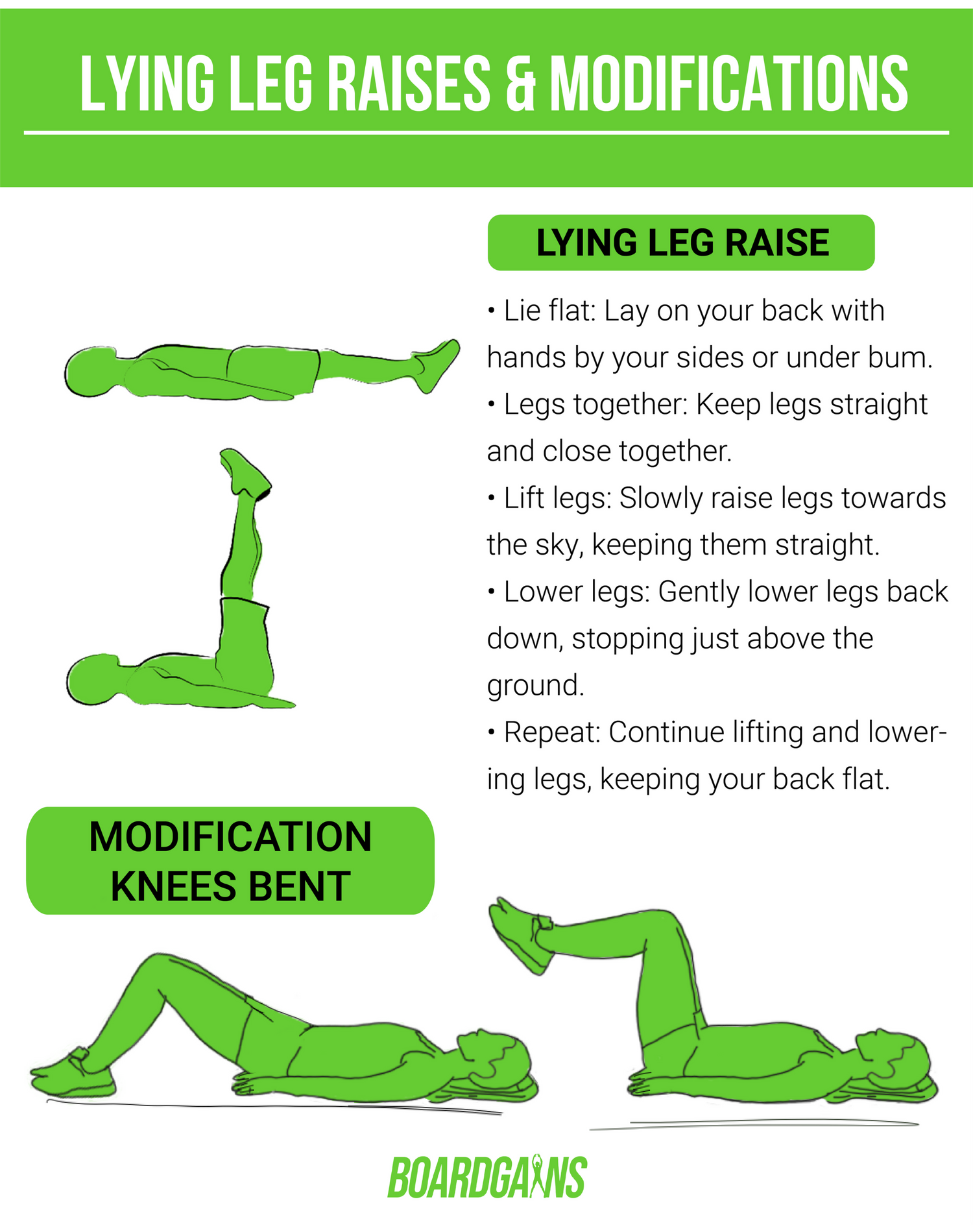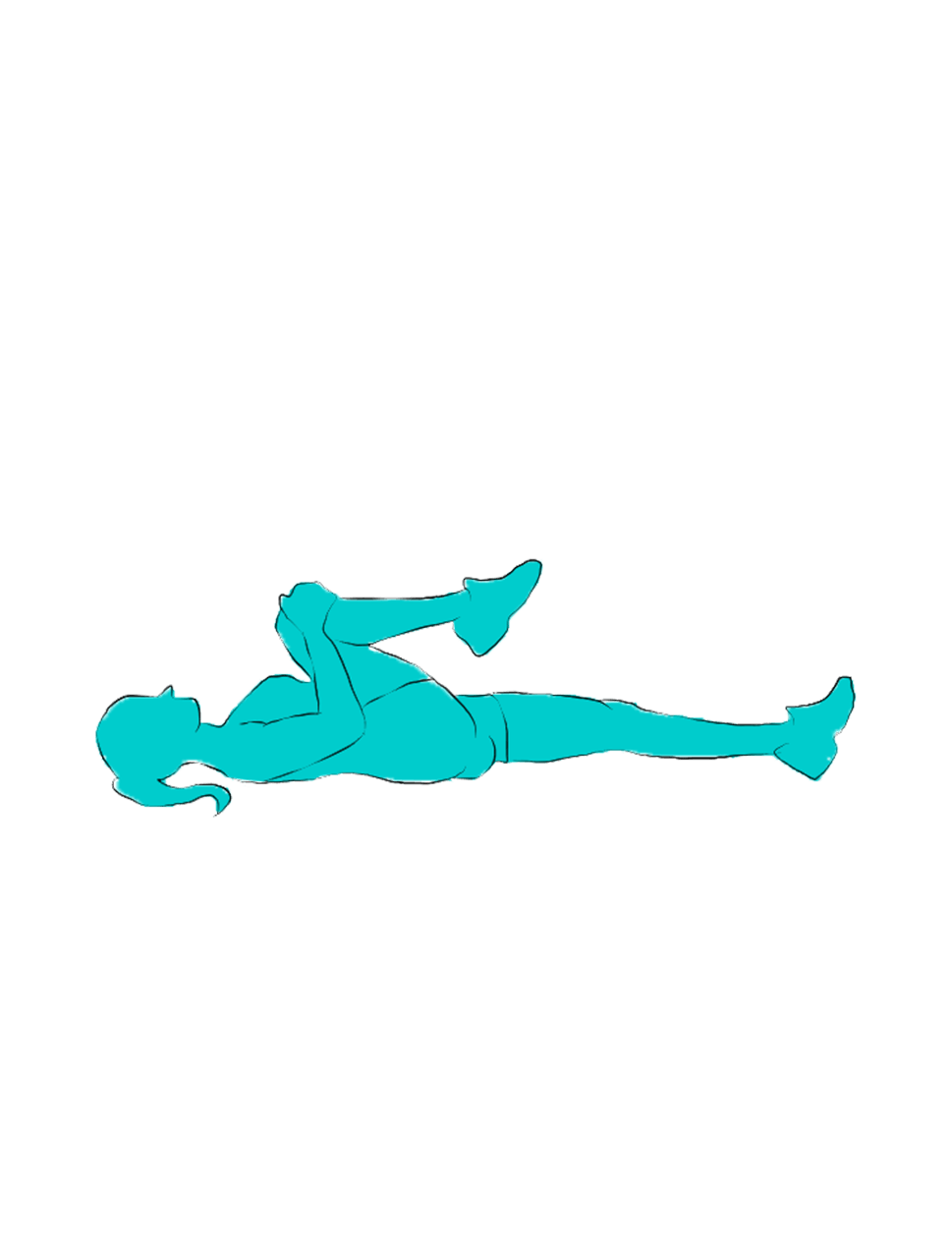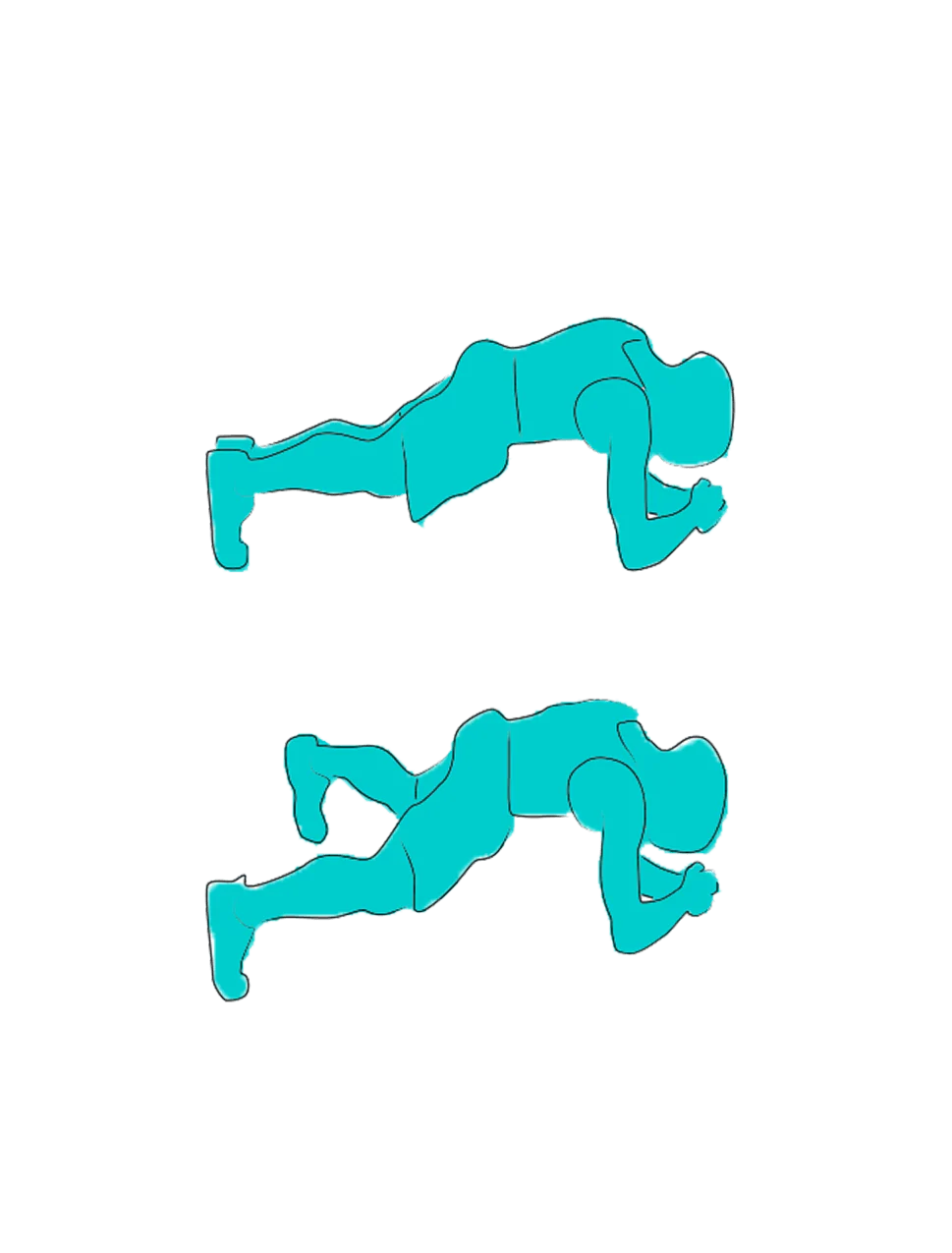Introduction To Lying Leg Raises
Lying leg raises, also known as lying leg lifts, are a classic exercise for strengthening and toning your abs, hips, and lower back muscles. These simple yet effective movements can help you achieve a strong and defined core, as well as reduce belly fat and improve posture. At Boardgains, we love incorporating this simple yet effective exercise into our fitness board game. In this article, we'll explore the many benefits of Lying Leg Raises and how Boardgains makes it even more fun and engaging.
How to Perform Lying Leg Raises
Setting Up the Correct Position
- Lie down on your back on a flat, comfortable surface.
- Place your hands under your glutes or at your sides for support.
- Keep your legs straight and together, with your feet slightly off the ground.
Raising Your Legs
- Engage your core and slowly lift your legs toward the ceiling.
- Keep your legs straight and maintain control throughout the movement.
- Stop when your legs are perpendicular to the floor.
Lowering Your Legs
- Slowly lower your legs back down, keeping them straight and controlled.
- Stop just before your feet touch the ground to maintain tension in your abs.
- Repeat for the desired number of repetitions.
Engaging Your Core
- Throughout the exercise, focus on keeping your core tight and engaged.
- Avoid arching your back by pressing your lower back into the floor. 3. Keep your head and neck relaxed to prevent straining.
Benefits of Lying Leg Raises
Strengthening Core Muscles
Lying leg raises target the abdominal muscles, specifically the lower abs, hip flexors, and obliques. By consistently performing this exercise, you'll develop a strong, stable core, which is essential for everyday activities and athletic performance.
Improving Posture
A strong core helps maintain proper posture by supporting the spine and preventing slouching. Lying leg raises can aid in developing good posture by strengthening the muscles responsible for maintaining an upright position.
Reducing Lower Back Pain
Many people experience lower back pain due to weak core muscles. Lying leg raises can help alleviate this issue by targeting and strengthening the lower back's supporting muscles.
Enhancing Balance and Stability
A strong core is essential for maintaining balance and stability during movement. Lying leg raises help build a solid foundation for better overall body control and coordination.
Lying Leg Raise Variations
Single Leg Raises
Raise one leg at a time while keeping the other leg slightly off the ground. This variation places less strain on the lower back and is ideal for beginners.
Bent-Knee Raises
Perform the exercise with your knees bent at a 90-degree angle. This reduces the difficulty and is suitable for those with limited flexibility or lower back issues.
Flutter Kicks
Raise your legs to a 45-degree angle and alternate raising and lowering each leg. This variation increases the challenge and targets the hip flexors more intensely.
Scissor Kicks
Raise your legs to a 45-degree angle and alternate crossing them over each other. This movement engages the obliques and adds variety to your routine.
Common Mistakes and How to Avoid Them
Not Engaging Core
Ensure that you're engaging your core throughout the entire exercise to maximize effectiveness and protect your lower back.
Arching Your Back
Press your lower back into the floor to prevent arching, which can cause strain and reduce the exercise's effectiveness.
Using Momentum
Avoid using momentum to raise your legs. Focus on slow, controlled movements to ensure proper muscle engagement.
Bending Knees Excessively
Keep your legs straight, or maintain a consistent bend if performing bent-knee raises. Excessive bending reduces the exercise's effectiveness.
Incorporating Lying Leg Raises into Your Routine
Frequency
Aim to perform lying leg raises 2-3 times per week as part of your core workout routine.
Duration
Start with 2-3 sets of 10-15 repetitions and gradually increase as you become stronger.
Alternating with Other Exercises
Combine lying leg raises with other core exercises, such as planks and Russian twists, to target different muscle groups and prevent boredom.
Tips for Maximizing Results
Focusing on Form
Ensure that you're using proper form to maximize the exercise's effectiveness and prevent injury.
Using Progressive Overload
Gradually increase the difficulty by adding more repetitions, sets, or advanced variations to continue challenging your muscles.
Breathing Properly
Inhale as you lower your legs and exhale as you raise them. Proper breathing helps engage your core and maintain focus.
Conclusion
Lying leg raises are an excellent exercise for developing a strong, stable core. By incorporating them into your routine and following the tips in this article, you'll be on your way to achieving better posture, reduced lower back pain, and improved balance and stability.
FAQs
-
Can lying leg raises help with weight loss?
While lying leg raises primarily target the core muscles, they can contribute to weight loss as part of a comprehensive exercise routine and a healthy diet. -
Are lying leg raises safe for pregnant women?
It is essential to consult with your healthcare provider before performing any exercise during pregnancy. Generally, it's recommended to avoid exercises that involve lying flat on your back after the first trimester. -
Can I perform lying leg raises if I have a herniated disc?
Consult your doctor or physical therapist before performing any exercise if you have a herniated disc or any other back condition. -
How long does it take to see results from lying leg raises?
Results vary from person to person, but with consistent effort, you may start to see improvements in your core strength and muscle definition within 4-6 weeks. -
Are lying leg raises better than crunches for targeting the lower abs?
Lying leg raises are generally considered more effective than crunches for targeting the lower abs. While both exercises work the entire abdominal region, lying leg raises place more emphasis on the lower part of the muscles, whereas crunches focus more on the upper abs.










1 comment
Anee kumar
Need more exercise
Leave a comment
This site is protected by hCaptcha and the hCaptcha Privacy Policy and Terms of Service apply.